Can You Freeze Endive?
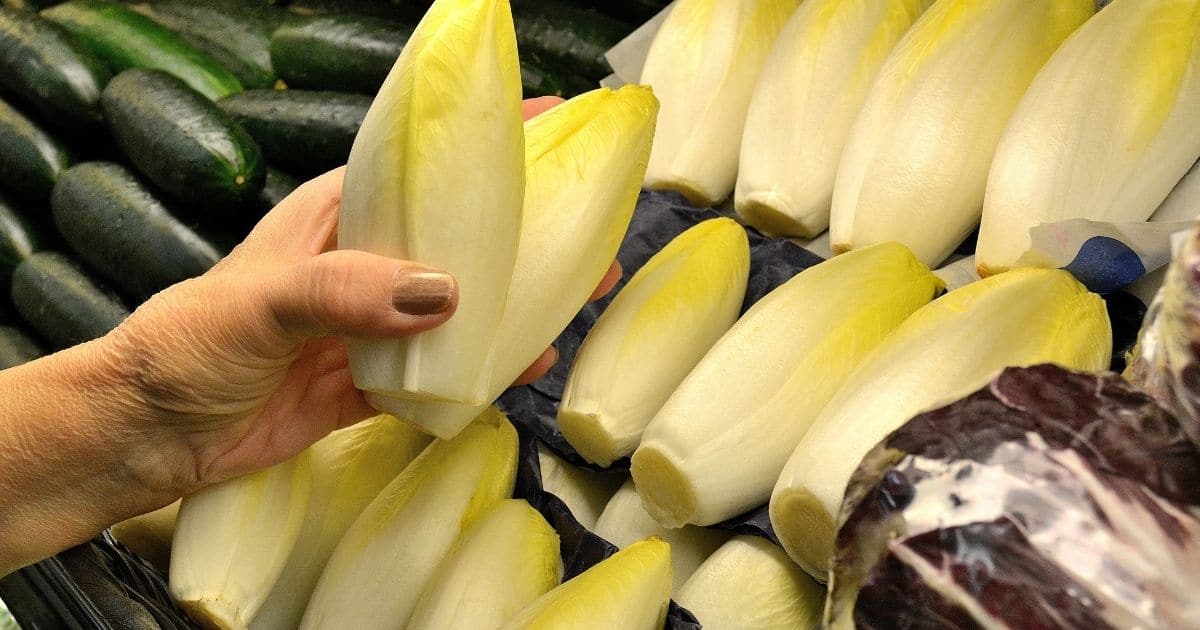
There’s no feeling quite as good as growing a harvest of beautiful leafy green vegetables during the summer months. However, depending on the size of your crop, you may find yourself in the same predicament that many gardeners experience at the end of the summer. How do I save these vegetables for long-term use? Especially in the case of endive, which is a tricky vegetable to grow, preserving it in the freezer can keep much of it from going to waste, as long as you know how to.
You can freeze endive by blanching it for about three or four minutes, then placing it straight into ice-cold water before freezing. While the blanching process will not maintain the texture or flavor especially well, it will keep its color whenever you need to thaw it.
Endive is an unusual plant in that it has several variations to it, and some are more suited for freezing than others. Read on to learn more about the exact steps to freeze endive, along with more information on this spectacular vegetable.
Endive Varieties
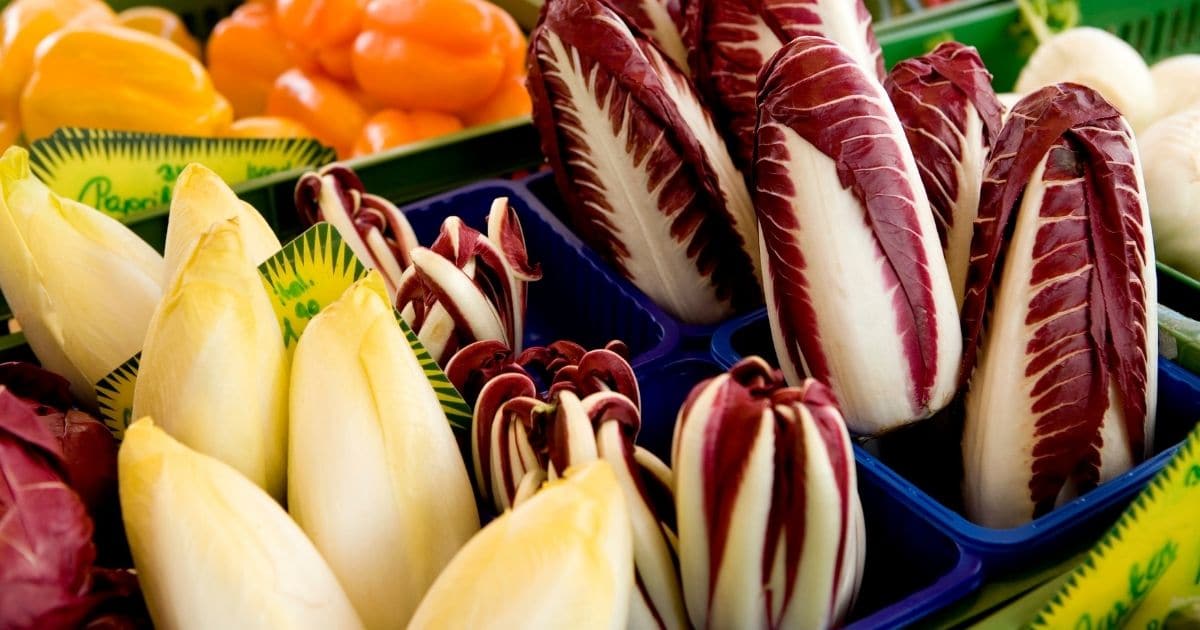
In an effort to get some potential confusion out of the way, endive is a name used to describe many plants that are part of the chicory family. These plants are very closely related to other similar vegetables like radicchio, frisee, escarole, and curly endive. Just to add to the confusion, the term curly endive is used interchangeably with regular endive, despite the fact that they look very different.
The endive that will be referred to throughout this article is a leafy green with a crisp texture and a slightly zesty and nutty flavor. This variation of the plant can be eaten both cooked and raw and is commonly used in salads and winter soups. There is also a plant called the Belgian endive, which is significantly rarer and is actually the sprout of chicory plants, which will not be part of this article.
Nutritional Benefits of Endive
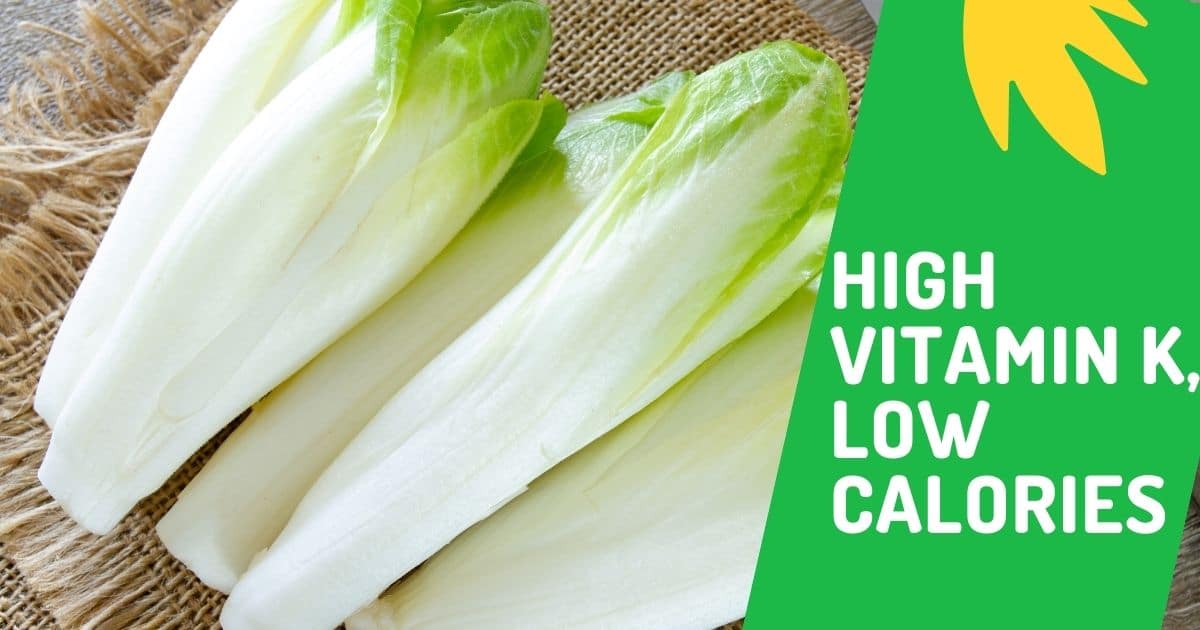
Regardless of what kind of endive you have available to you, it is a very nutritious vegetable that comes chock full of a variety of vitamins and other health benefits. Specifically, endive has an abundance of vitamin K and contains an extremely low-calorie count of only 8.6 calories per 100g of raw endive. This low-calorie count, coupled with the vast array of nutrients packed into the endive, means that it is perfect for including in a weight loss routine.
Another benefit of this nutrient-rich vegetable relates to digestion. Endive is an excellent source of natural fiber, with nearly one gram of fiber per half-cup serving. This nutritional content ensures good digestive health, which can also prevent digestive disorders with regular consumption of endive.
The high-fiber nature of this wonderful vegetable can help slow the absorption of sugar into the bloodstream. This slow-down can stabilize blood sugar levels and reduce the risk of putting on additional weight during a slimming period.
Being an incredible vitamin K source sets endive apart from many other greens by providing approximately 72% of daily needs with every half-cup serving. The primary advantage of regular vitamin K intake is the way in which it strengthens bones and can help preserve bone toughness in children and adults.
Endive can be an excellent nutritional option for people with high blood glucose levels as it has an extremely low glycemic load of approximately zero. Alongside the vitamins and minerals that endive is rich with, it also contains a tremendous amount of antioxidants that help stave off chronic disease and prevent cell damage from occurring ahead of time.
Many women going through pregnancy have stated that endives helped make their term much more comfortable to reach as it is a natural and easy way to get daily folic acid intake. Folic acid or folate is actually part of vitamin B’s makeup, which has enormous benefits for unborn children (source: Nutrition Data).
The best part of all these nutritional benefits of endive is that it is not a difficult plant to find. Most grocery stores will carry at least one variety of endive, which can help aspiring cooks incorporate it into their diet. Growing endive is a significantly more difficult endeavor. Still, with the proper climate and an understanding of the intricacies of raising this tricky vegetable, you can have a bountiful crop of this spectacular plant in no time.
Preserving Endive In The Short Term
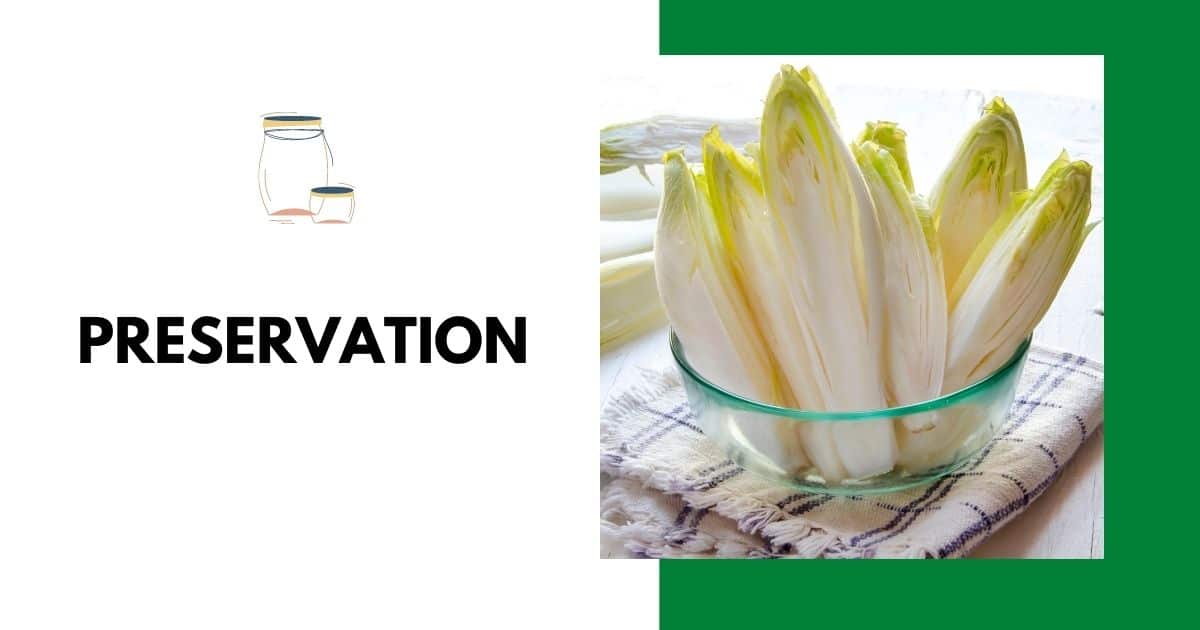
Endive has a lifespan similar to that of lettuce. Like lettuce, if it is tossed into the refrigerator with little additional preparation, it will go off quickly, usually within two or three days. The best way to prolong its lifespan involves storing it in either a cold cellar or in the refrigerator, but with some additional steps.
The best storage method is to keep the entire head of the plant with the roots attached in a container with a small amount of water. If you are doing this method, ensure that the leaves themselves do not get wet, or they will turn soggy very quickly. Suppose you do not have the full plant with the roots available. In that case, you can store the leaves individually in a humidity-controlled location within the fridge, again preventing them from getting directly wet (Source: Morning Chores)
Best Method for Freezing Endive
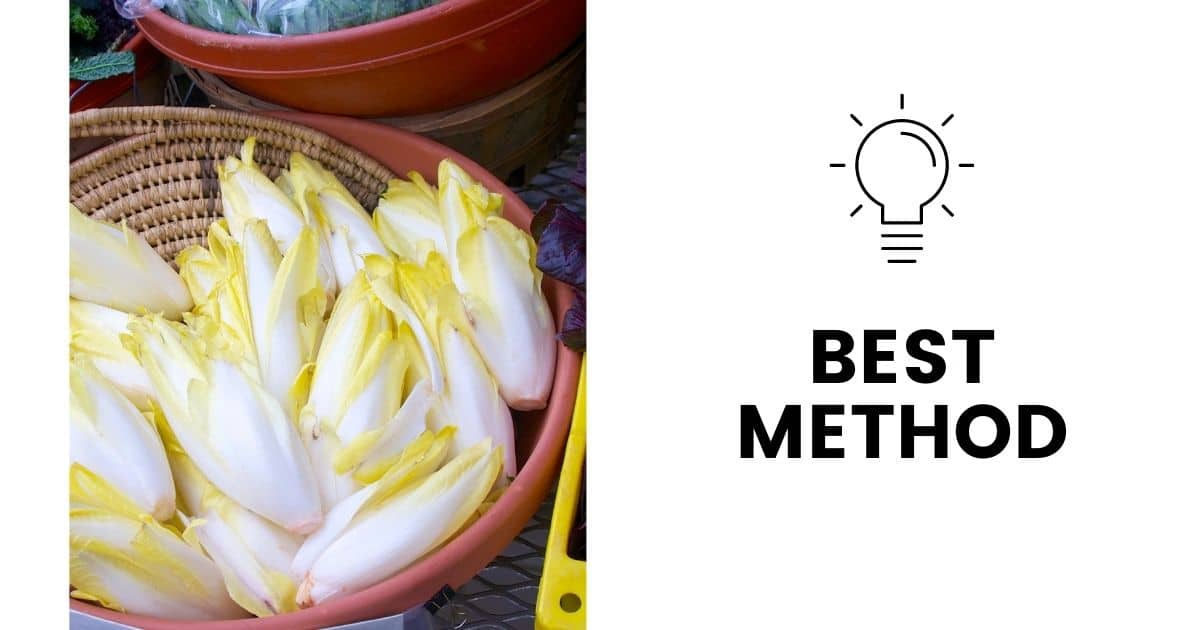
Short-term storage is all well and good, but for optimal long-term use, freezing is the best way to keep your endive fresh and usable for a very long time. As with many other leafy vegetables, the most critical part of preparing your endive for the freezer is by blanching it first. You can accomplish this by boiling a pot of water on the stove, with a large bowl of ice-cold water next to it.
When the water is boiling, put your endive into the pot and let it blanch for only about two to three minutes. As soon as that time has elapsed, immediately dunk your endive into the bowl of ice water, and then take it out and remove the moisture from the leaves. Some people use a salad spinner at this point to remove as much moisture as possible quickly, but it is not entirely necessary (Source: Everything What)
There are a few different ways to store your endive once you’ve correctly blanched it, which depends entirely on how you plan to use it. If you plan to use the leafy greens in their natural state, the best way to store them is by placing the leaves into a vacuum-sealed freezer bag, similarly to how you would freeze cabbage leaves. When they are thawed from this state, they can be used in a similar capacity to spinach. They will lose their crispy texture and become a bit mushier, but they can still be a great addition to things like soups, stews, and stir-frys.
Another excellent option that many health-conscious people choose to utilize is actually pureeing and then freezing the endive to use in smoothies down the road. Since this method does not require the texture to be maintained, it is one of the more straightforward freezing methods as you only need a sealed container to dump the puree into before freezing.
The best way to thaw frozen endive, whether it is in its leafy form or a puree, is to place it in the refrigerator overnight. As is the case with many vegetables, it is inadvisable to let it thaw on the counter. That method introduces a lot of textural unpleasantness and potential for bacterial growth.
Using Your Frozen Endive
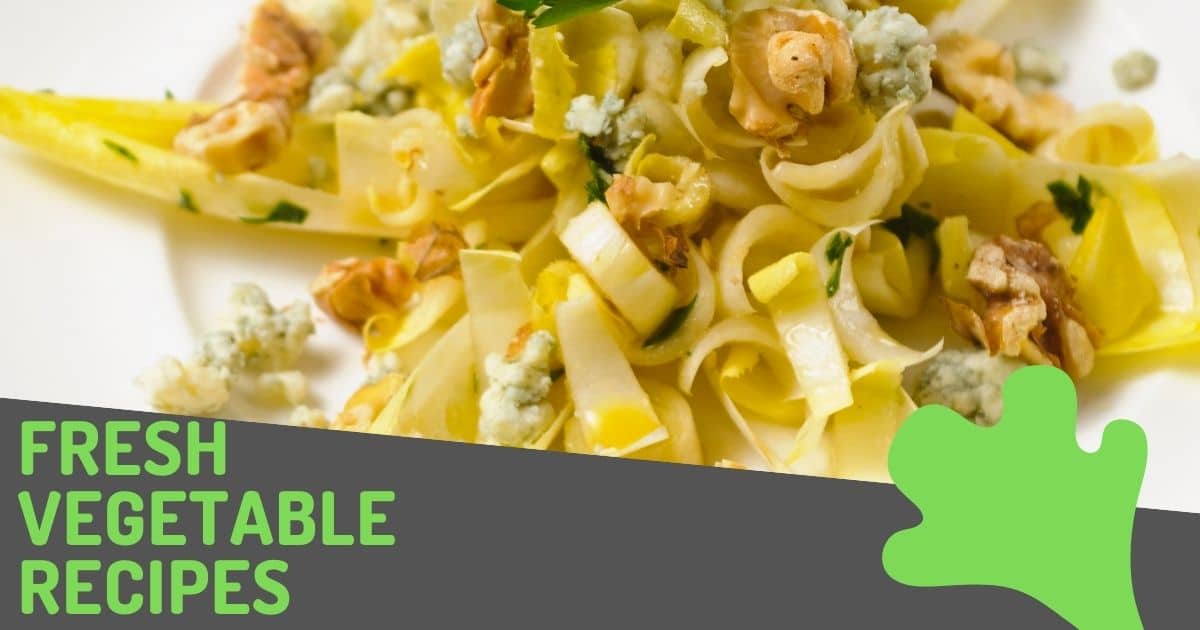
One of the challenges that many cooks may encounter is how to use their endive once they have thawed it from frozen. Many recipes that call for endive recommend using it in garden salads and other fresh vegetable recipes. Unfortunately, as we have discussed above, when you thaw endive from frozen, it loses its crisp texture and becomes similar to wilted spinach.
This texture is an important thing to keep in mind when planning meals using your frozen endive. Many recipes that benefit from wilted spinach can use endive as a substitute. While endive does not have the same level of bitterness that spinach brings to the table, it can provide a similar taste in meals like alfredo-based pasta. Further wilting the thawed endive in a pan with olive oil, garlic, and other spices will help give it the perfect flavor to complement creamy pasta sauces.
As mentioned above, pureed endive can be a perfect addition to green smoothies as it is a very effective method for conferring the health benefits mentioned earlier in this article. Especially when working with frozen endive, it maintains many of its health benefits because it is still technically in its raw form. While cooking thawed endive is a phenomenal way to overcome the loss of its delicious natural texture, the process of cooking will remove some of those nutritional benefits.
Ultimately, the best possible use for thawed endive is in soups and stews like Italian wedding soup and similar variations. By allowing the endive to simmer in these recipes that require long cook times, you will be able to ignore the loss of the crispy texture that raw endive provides. Soups and stews tend to taste even better the longer they are allowed to simmer. This longer duration enables your endive to pick up the flavors of all the other components of the soup and allows the soup to pick up the endive’s characteristic light bitterness and nuttiness.
Wrapping Up This Tricky Vegetable
With all the confusion about its name and other variations of it, endive is undoubtedly a tricky vegetable to use effectively. In its raw form, it is a perfect addition to many salads, wraps, and other fresh foods. Unfortunately, freezing endive removes a lot of its versatility in the kitchen and relegates it to soups, stews, and stir-frys.
So although it is objectively possible to freeze endive and use it in its thawed form, it is generally inadvisable to do so unless you have no other options for preserving it. Endive is one of those plants where you will benefit from using as much of it as possible in its raw form and then only freezing the last remnants for use over the long winter months.